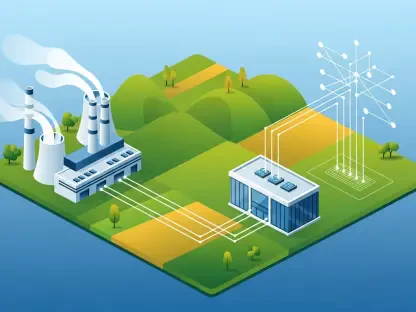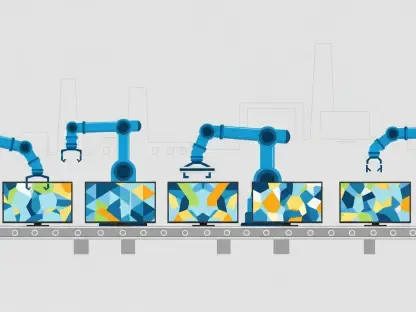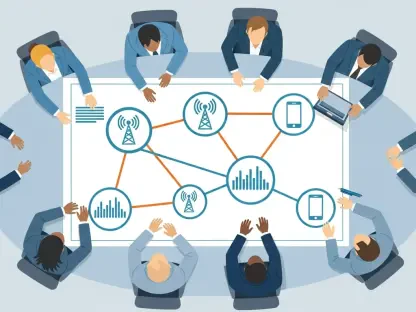In today’s interview, we’re joined by Vladislav Zaimov, a seasoned telecommunications expert with vast experience in enterprise networks and managing risks in vulnerable infrastructures. We’re delving into the current landscape of broadband network deployments in the US, focusing on various exciting projects underway.
Can you explain what the ConnectAll Municipal Infrastructure Program is and how Archtop Fiber’s project fits into it?
The ConnectAll Municipal Infrastructure Program is an initiative aimed at expanding high-speed internet infrastructure to underserved areas. Archtop Fiber’s project, supported by nearly $30 million in funding, aligns well with this mission, as it aims to lay over 220 miles of fiber in Sullivan County, New York. This project will connect 22,000 addresses, reflecting the program’s broader goal of bridging the digital divide.
Archtop Fiber received $29.9 million in funding for its project in Sullivan County. Can you detail how those funds will be allocated throughout the construction process?
The $29.9 million in funding from the ConnectAll Program will be allocated towards various aspects of construction in Sullivan County. This includes the costs associated with deploying over 220 miles of fiber, a significant portion of which will involve burying the fiber underground. The funds will cover equipment, labor, and other logistics necessary to bring high-speed internet to the region.
Why was it decided that nearly 100% of the fiber in Sullivan County would be buried or underground? What are the benefits of this approach?
Burying the fiber almost entirely underground in Sullivan County was a strategic decision. This approach offers several advantages, such as enhanced protection from weather-related disruptions, longer infrastructure lifespan, and fewer maintenance issues. While it involves more substantial initial investment and greater construction effort, the long-term gains in reliability and reduced service interruptions justify the decision.
Archtop Fiber secured nearly $200 million for expansion plans in the northeast earlier this year. What are some of the key areas or states where this expansion will take place?
The $200 million secured by Archtop Fiber is instrumental for its expansion in the northeast, targeting states like New York, Massachusetts, and parts of New England. These areas have been chosen due to a combination of demand for high-speed internet and existing infrastructure that can be efficiently upgraded or expanded.
Can you provide more specifics on the timeline for Archtop Fiber’s project in Sullivan County? What are the major milestones leading to its completion by the end of 2026?
The project in Sullivan County is set to be completed by the end of 2026. Key milestones include the initial groundbreaking this year, followed by the phased installation of fiber infrastructure. Customer installations will begin shortly thereafter, with gradual expansion and service rollouts over the intervening years to ensure all targeted addresses are connected on schedule.
Regarding GoNetspeed’s project in East Haven, Connecticut, what are some of the challenges and opportunities of building a privately funded network?
Building a privately funded network, like GoNetspeed’s in East Haven, comes with challenges such as securing investment and managing costs without public subsidies. However, it also presents opportunities for greater flexibility in operations and faster decision-making processes. The project aims to deliver high-speed internet to more than 13,000 homes and businesses, potentially setting a benchmark for similar private undertakings.
How does GoNetspeed determine which towns or regions to target for network expansion, and what made East Haven an ideal candidate?
GoNetspeed selects expansion sites based on factors like demand for broadband services, existing market conditions, and financial viability. East Haven was an ideal candidate because of its underserved status regarding high-speed internet. The town presents a strong business case with clear demand and an opportunity to deliver significant impact through improved connectivity.
Can you delve into the details of the public-private partnership helping to fund AT&T’s expansion in rural Mississippi? What roles do the state and AT&T play?
In this public-private partnership, the state of Mississippi provides $16 million from the American Rescue Plan, while AT&T contributes $14 million. This collaboration aims to extend the AT&T Fiber network to rural areas lacking high-speed internet. The state and AT&T collaborate closely on planning and execution, ensuring that resources are allocated efficiently to connect underserved rural communities.
AT&T’s goal is to reach 60 million locations with fiber by 2030. What strategies are in place to ensure this goal is met?
To reach 60 million locations by 2030, AT&T is leveraging a mix of strategic partnerships, infrastructure investment, and technology upgrades. They are focusing on areas with high demand, constructing robust and resilient networks, and employing innovative solutions to streamline deployment. Regular assessments and adaptive planning ensure progress towards the target remains on track.
Consolidated’s Fidium Fiber recently launched in Old Orchard Beach, Maine. What measures are being taken to ensure high-quality service during and after the rapid expansion?
Consolidated is implementing rigorous quality control measures, both in the construction phase and after launch. This involves continuous monitoring of network performance, customer feedback systems, and proactive maintenance plans. They aim to ensure reliable service to the newly connected 7,800 homes and businesses during rapid network expansion.
How is Consolidated planning to handle increased demand and potential technical issues as it triples its availability throughout York County?
Consolidated is scaling its infrastructure to manage increased demand effectively. This includes boosting network capacity, investing in advanced technologies for scalability, and training additional technical staff to address any potential issues. By anticipating growth and preparing the network accordingly, Consolidated aims to maintain seamless service as availability expands in York County.
Spectrum just launched services in Somerset County, Maryland. Can you discuss the process of obtaining state and county funding and how it complements Spectrum’s private investment?
The launch in Somerset County was made possible through a blend of state and county funding, along with Spectrum’s private investment. The collaborative effort involved identifying funding opportunities, aligning project goals with public interests, and ensuring transparent cost-sharing. This multifaceted approach not only supplements Spectrum’s capital but also underscores community commitment to enhancing connectivity.
Looking broadly at the current state of broadband expansion in the US, what are some of the significant trends or challenges that you are observing?
There are several noteworthy trends, including increased investment in fiber networks and a greater emphasis on reaching rural communities. Challenges remain, however, such as navigating regulatory landscapes, funding large-scale deployments, and ensuring equitable access across diverse regions. Innovation in network technology is pivotal in addressing these obstacles and advancing the broadband expansion agenda.
What is your forecast for the future of broadband deployment in the US?
I foresee continuous growth with more collaborative efforts between private enterprises and public agencies to expand coverage. Emphasis will likely remain on delivering high-speed internet to both urban and rural communities while focusing on sustainable and resilient infrastructure. As digital demand grows, so will the need for strategic investments and innovative solutions to meet future connectivity needs.









